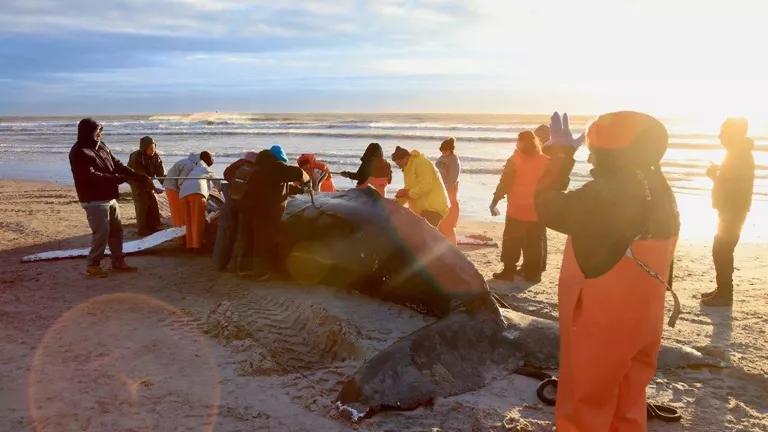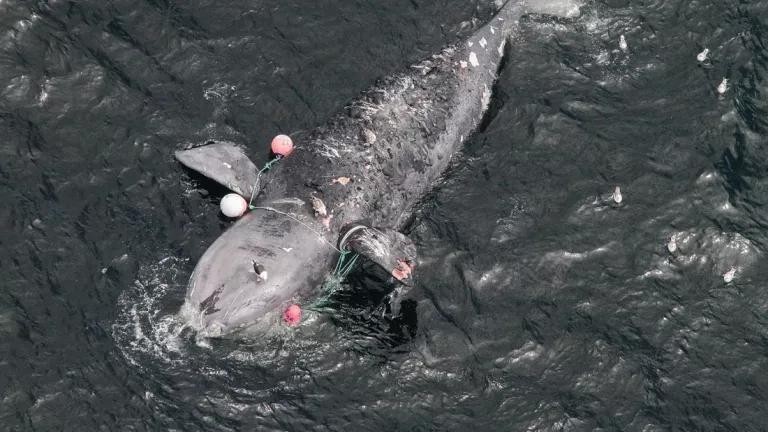In court, federal agencies sometimes attempt to justify environmentally backward decision-making by pointing to their environmental impact statement, a document that requires them to take a hard look at the environmental consequences of their proposals. But what if your impact statement is built on a fallacy?
Such is the case of the Interior Department's decision last year to open the mid- and south-east Atlantic to high-energy seismic exploration for oil and gas.
I've written several times on this blog of the disruptive power of the industry's surveys. To prospect for oil and gas, companies typically tow arrays of high-volume airguns through the water, producing blasts of sound roughly as loud as explosives about every 12 seconds, night and day, for weeks and months on end. It should come as no surprise that such an activity can have large-scale effects on species, like whales, that depend on sound for their survival. Indeed, a lengthening series of published studies show exactly that.
A study in the Mediterranean Sea, for example, documented impacts on endangered fin whales--silencing and abandonment of habitat--over an area covering some 100,000 square kilometers and lasting at least two weeks after the survey had ended. And yet the Interior Department has assumed that these high-powered airgun arrays become innocuous to even the most sensitive marine wildlife within only a few kilometers.
Today another challenge to that assumption came in the form of a peer-reviewed paper from a diverse group of ocean noise specialists, including biologists from Duke, Cornell, and St. Andrews Universities and policy experts like myself. (A press release is here.) In one section, the authors reviewed data on the impacts of seismic surveys on marine wildlife and concluded that the assumptions of U.S. agencies are, in a nutshell, wrong. The idea that seismic impacts would be limited to a few kilometers comes from a "single report" issued in the 1990s and based largely on research conducted in the 1980s, when the field was in its infancy. But (as the authors observe) "considerable evidence" has emerged since then that impacts such as foraging disruption and habitat abandonment "can occur well below" the exposure levels that Interior presumes in its analysis.
The authors conclude by suggesting an alternative approach to impact analysis that "comes much closer to reflecting the existing data." Needless to say, it would require the Interior Department to thoroughly revise its analysis.
Getting the science right is important. The Interior Department and the National Marine Fisheries Service are now reviewing industry proposals to conduct more than 90,000 miles of seismic surveys, from the New Jersey border down through Central Florida, over the next year alone. This administration committed itself at the outset to use the best available science in its decision-making. It needs to acknowledge that, for high-energy seismic surveys, the best available science has long since changed.



